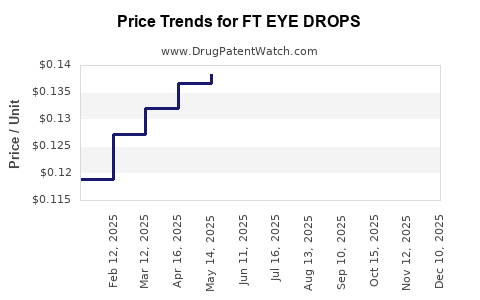Drug Price Trends for FT EYE DROPS
✉ Email this page to a colleague

Average Pharmacy Cost for FT EYE DROPS
| Drug Name | NDC | Price/Unit ($) | Unit | Date |
|---|---|---|---|---|
| FT EYE DROPS 0.05% | 70677-1159-01 | 0.10856 | ML | 2024-11-20 |
| FT EYE DROPS 0.05%-1% | 70677-1158-01 | 0.12691 | ML | 2024-11-20 |
| FT EYE DROPS 0.05% | 70677-1159-01 | 0.10818 | ML | 2024-10-23 |
| FT EYE DROPS 0.05%-1% | 70677-1158-01 | 0.12538 | ML | 2024-10-23 |
| FT EYE DROPS 0.05% | 70677-1159-01 | 0.11373 | ML | 2024-09-18 |
| FT EYE DROPS 0.05% | 70677-1159-01 | 0.11191 | ML | 2024-08-21 |
| >Drug Name | >NDC | >Price/Unit ($) | >Unit | >Date |


